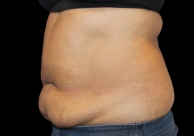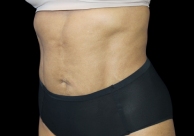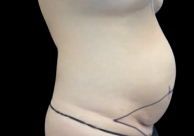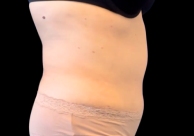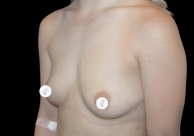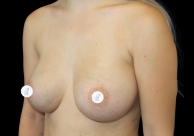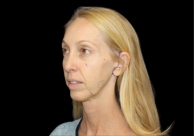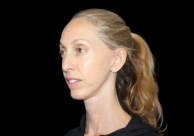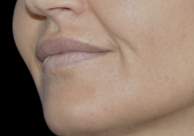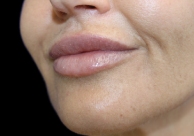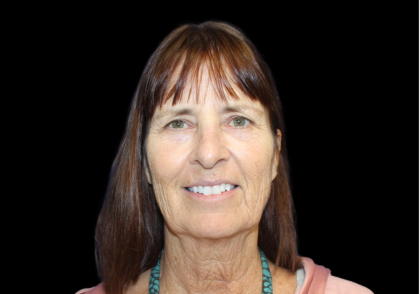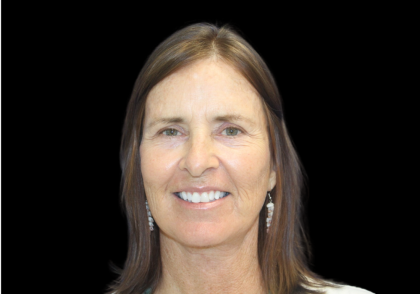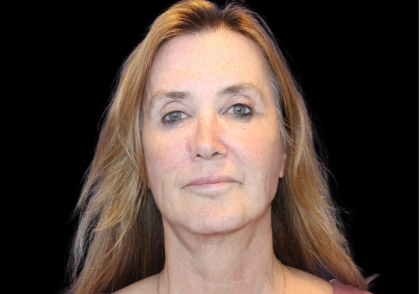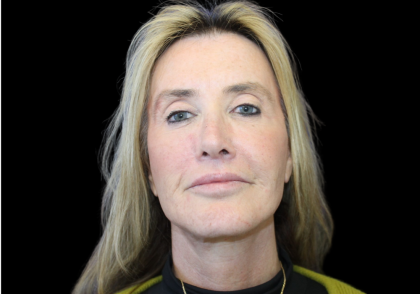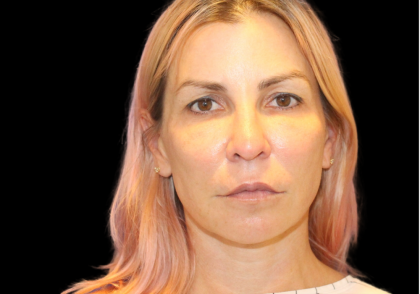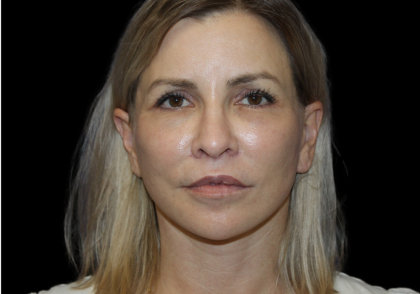Facelift
Conveniently located to serve the areas of Honolulu, HI

Facelift surgery, or rhytidectomy, is a cosmetic procedure that effectively addresses signs of facial aging. It involves removing excess skin, fat, and tissue on the face and neck, as well as reinforcing the underlying facial musculature. It can smooth wrinkles, reduce jowls, and tighten sagging skin on the face and neck for a more youthful look.
Contents
- 1 Before and After Photos
- 2 About Facelifts
- 3 Facelift Techniques
- 4 Advanced Facelift in Hawaii
- 5 Benefits of Facelifts
- 6 Who is a Candidate for a Facelift?
- 7 Personal Consultation
- 8 Preparation
- 9 Facelift Procedure
- 10 Recovery
- 11 Results
- 12 Ancillary Procedures
- 13 How Much Do Facelifts Cost in Oahu?
- 14 FAQ
- 15 References
Before and After Photos
At Athena Clinic, our board-certified Oahu plastic surgeons, Dr. Daniel Murariu and Dr. Robert Peterson provide facelifts for patients in the Honolulu area. We prioritize thoughtful patient care to achieve the best possible cosmetic results. For more information, and to book a personal consultation with us, call (808) 944-8551 or visit our contact page.
Read our blog for an introduction to Athena Clinic.
About Facelifts

As gravity and everyday life take their toll, signs of facial aging such as wrinkles, fine lines, sagging skin, and jowls begin to appear due to a loss of vital collagen and elastin. (1) This can cause distress and embarrassment for people who still feel young at heart and want to look as beautiful as they were in their youth. Luckily, cosmetic surgeries like the facelift can directly address these issues and enhance the appearance of the face and neck for a smoother, rejuvenated visage.
The facelift has evolved considerably over time. And now, the latest advancements in cosmetic techniques have made it a predictable, safe, and highly efficacious procedure. (2) These surgeries can also be highly individualized, as surgeons can adapt their surgical techniques to each patient’s unique facial anatomy.
Facelift Techniques
The most common facelift techniques include:
Traditional Facelift
The traditional facelift can rejuvenate the face, reduce jowls, and contour the neck by altering the Superficial Musculoaponeurotic System (SMAS). The SMAS is a fibrous layer of tissue that lies beneath the skin and is attached to the muscles of the face. It provides support and structure to the facial tissues and plays a key role in facial aging. In a traditional or “full” facelift, the surgeon typically lifts and tightens the skin and superficial tissues, but may not address the deeper layers of the SMAS.
Traditional facelifting involves making an incision in front of the ear that travels around the earlobe and behind it to the lower scalp, ending at the hairline. Through these incisions, surgeons can sculpt fat for optimal contouring, lift and reposition the muscle and deeper tissues, and trim and tighten the skin. In some cases, we make an additional incision under the chin if the signs of aging are extensive.
Deep Plane Facelift
A deep plane facelift involves dissection and repositioning of the SMAS layer and deeper tissues to achieve more comprehensive and long-lasting results. During the procedure, the surgeon makes incisions along the hairline and around the ears, then carefully separates the skin from the underlying SMAS layer. By accessing the deeper planes of the face, the surgeon can lift and reposition the SMAS layer, restoring volume to the midface, improving jawline definition, and reducing jowls and marionette lines.
The deep plane facelift is the preferred method at Athena because it allows for more natural-looking results with less tension on the skin, minimizing the risk of a “pulled” or “windswept” appearance.
Limited-Incision Facelift
For limited rejuvenation around the eyes and mouth, this mini facelift technique can reduce nasolabial folds and other deep creases. It involves making shorter incisions at the temples and around the ear to remove excess skin and tighten the remaining skin.
Neck Lift
Frequently combined with a facelift, a neck lift can treat jowls, loose skin on the neck, and excess fat under the chin. It involves making an incision around the ear lobe and behind the ear to the lower scalp. Depending on the patient’s anatomy, surgeons may use a soft biologic mesh sling support to further reinforce and balance the facial contours.
Revision Facelift
A revision facelift, also known as a secondary facelift or corrective facelift, addresses unsatisfactory results or complications from a previous facelift surgery. While facelift surgery is designed to rejuvenate the face and provide long-lasting results, sometimes the initial procedure may not meet the patient’s expectations or can lead to complications such as asymmetry, scarring, or an unnatural appearance. A revision facelift aims to correct these issues and provide enhanced outcomes a patient is happy with.
Advanced Facelift in Hawaii
While there are many ways to perform a facelift, Dr. Peterson and Dr. Murariu’s goal is to produce the most natural result with the least risk during the procedure. They offer IV sedation over general anesthesia for the following reasons:
- It is safer for older patients.
- There is a decreased risk of blood clots.
- There are no unwanted side effects such as nausea or vomiting.
- Recovery is shorter and more straightforward.
If patients seek a more cost-effective surgery, Dr. Peterson and Dr. Murariu also specialize in the awake facelift, which uses only local anesthesia. Patients are free to discuss this and other aspects of their treatment plan during their personal consultation at Athena Clinic.
Benefits of Facelifts
Many benefits come with undergoing a facelift. These include:
- Reducing sagging skin and tightening up the face
- Treating jowls for contoured cheeks and a refined jawline
- Reducing nasolabial folds, wrinkles, and fine lines
- Removing excess and displaced fat and tissue for better facial proportions
- Providing aesthetic enhancement with minimal visible scarring
- Achieving an energetic look that takes years off of your face
- Improving your self-confidence and self-esteem
Who is a Candidate for a Facelift?
If you are tired of moderate to severe signs of aging in your face and ready to do something about it, a facelift procedure at Athena Clinic could be right for you. Candidates may experience:
- Visible signs of facial sagging and wrinkles
- Loose skin and deep creases around the cheeks, jawline, and neck
- A loss of facial volume and definition
- Jowls or double chin caused by excess skin and fat deposits
Ideal candidates will have a positive attitude, a commitment to post-surgery care, and realistic expectations about the transformative effects of this treatment.
Personal Consultation
At your consultation, we will answer all of your questions about facelift surgery. We will ensure that you understand what this treatment entails so you can make an informed decision about your cosmetic care. To determine if surgery is a safe option for you, we will ask you some questions and run some tests. We will want to know all about your medical history, including your past conditions, prescriptions, and surgeries. You can tell us about your beauty goals, and we will assess the signs of aging on your face. This will allow us to create a personalized treatment plan that precisely addresses your concerns and provides effective aesthetic results.
To schedule your personal consultation in Honolulu, call (808) 944-8551.
Preparation
Before your facelift procedure, we will give you personalized preparation instructions based on the information you provide during your consultation. These may include changes to your prescriptions and certain aspects of your lifestyle. We recommend following these instructions closely, as they can make your treatment safer and improve your results.
In the weeks leading up to your surgery, you should avoid alcohol and tobacco consumption. These substances can affect your ability to heal and lead to complications. You should also avoid NSAIDs (Non-Steroidal Anti-Inflammatory Drugs) like ibuprofen and aspirin, vitamin E, and other herbal supplements that thin the blood. These substances can lead to excess bleeding during surgery and unsightly bruising during recovery. Continue living a healthy and active lifestyle to ensure that you heal properly and accentuate the aesthetic results of your treatment.
Facelift Procedure
At Athena Clinic, our facelifts are outpatient procedures, which means you can go home the same day as your surgery. When you come in for your treatment, we will administer IV sedation to prevent any potential discomfort. Your surgeon will begin by making the necessary incisions. They will then remove skin, and reposition fat and tissue to tighten and slim your face. They will also provide contours to your facial fat and reinforce the underlying muscles using sutures. Depending on the precise details of your procedure plan, a facelift will take from two to four hours to complete. When your surgeon is finished, they will close your incisions and we will move you to a recovery room where we will monitor you as your initial recovery begins. When you are in stable condition, you may go home.
Recovery
After your facelift surgery, we will wrap your incisions with bandages. You will need to come back in for several check-up appointments where we will assess your progress and remove your bandages and sutures. Recovery from this treatment typically requires two weeks of downtime. During this period, you should avoid over-exerting yourself and be careful not to irritate your treatment area. You may experience some redness, swelling, bruising, and discomfort near your incisions. If these symptoms become bothersome, we can prescribe medication to help alleviate them.
Results
The final results of your facelift will be partially hidden by swelling for up to six months after your procedure. However, you will be able to see a substantial transformation in the tightness and contours of your face soon after treatment. Your face will be firmer and better defined with smoother and more youthful-looking skin.
Ancillary Procedures
Fat Transfer
Facial fat transfer, also known as autologous fat transfer, fat grafting, or facial volume restoration, is frequently implemented in facelift surgery. It involves the gentle extraction of excess fat from one area of the body using liposuction, such as the abdomen or thighs, and its repositioning to areas of the face that have lost volume, such as hollow cheeks.
Eyelid Lift
An eyelid lift, or blepharoplasty, rejuvenates the appearance of the eyes by addressing sagging skin, puffiness, and wrinkles around the eyelids. It is a common addition to facelift surgery. With meticulous precision and advanced techniques, blepharoplasty restores a youthful, refreshed look to the eyes. Patients may seek an upper blepharoplasty for upper eyelid sagging, lower blepharoplasty for under-eye puffiness, or a combination of the two in a quad blepharoplasty, which addresses the entire eye area.
Brow Lift
A brow lift, also known as a forehead lift or browplasty, smooths the forehead and raises the position of the eyebrows. Your surgeon will use one of three approaches:
- Coronal Approach: This traditional technique involves creating a long incision behind the hairline from ear to ear. Through this incision, they lift and reposition the underlying tissues and remove excess skin.
- Endoscopic Brow Lift: This minimally invasive technique utilizes small incisions and an endoscope, a thin tube with a camera, to visualize and adjust the underlying tissues. It offers the advantage of shorter incisions, minimal scarring, reduced recovery time, and precise results.
- Direct Brow Lift: In some cases, a direct brow lift may be recommended for patients with severe brow ptosis (drooping). This procedure involves removing a small amount of skin directly above the eyebrow, resulting in an elevation of the brow position. This technique is particularly effective for targeted correction but may result in more visible scarring.
Dr. Peterson honed his brow lift techniques under the guidance of Dr. Robert Flowers, a renowned expert in the field. Learning directly from Dr. Flowers, Dr. Peterson and Dr. Murariu have mastered the art of brow rejuvenation, ensuring precise and natural-looking results for their patients.
How Much Do Facelifts Cost in Oahu?
The cost of your facelift treatment will depend on how extensive your procedure requirements are. We discuss the cost, as well as financing and other topics at your personal consultation.
To learn more about how much facelifts cost at Athena Clinic, call (808) 944-8551 or contact us online.
FAQ
Do facelifts leave visible scars?
Facelifts require incisions, so visible scarring is inevitable. However, surgeons can make facelift incisions in discreet locations behind the ears and along the hairline and jawline. This does a good job of hiding the scars from plain sight.
How long do facelift procedures take to complete?
Facelift procedures range in complexity based on the severity of the symptoms on each patient’s face. They typically take between two and four hours to complete.
How long do the results of a facelift last?
Although the effects of aging are inevitable, the skin-tightening effects of a facelift procedure can last for as long as ten years or longer. Staying healthy and active, taking care of your skin, and avoiding excessive sun exposure can help to prolong your results.
What is a deep plane facelift?
The deep plane facelift is a type of facelift that specifically targets the underlying layers of the face, including the deeper muscle and fascia layers. By lifting and repositioning these deep tissues, the deep plane facelift provides comprehensive rejuvenation for a more youthful appearance.
References
- Yang AJ, Hohman MH. Rhytidectomy. PubMed. Published 2021. https://www.ncbi.nlm.nih.gov/books/NBK564338/
- Luu NN, Friedman O. Facelift Surgery: History, Anatomy, and Recent Innovations. Facial Plastic Surgery. Published online September 16, 2020. doi:https://doi.org/10.1055/s-0040-1715616
